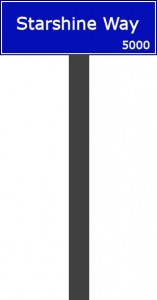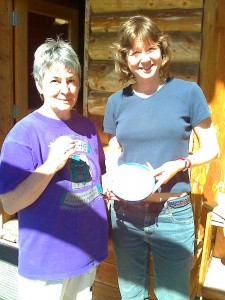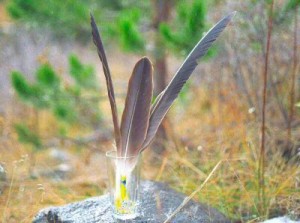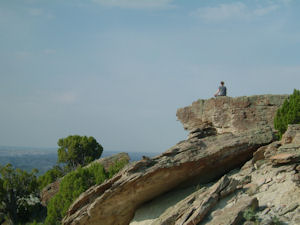 The West is the place of darkness, black, the night. I wonder if night owls enjoy hanging out in the West part of the wheel, and early birds prefer the East.
The West is the place of darkness, black, the night. I wonder if night owls enjoy hanging out in the West part of the wheel, and early birds prefer the East.
For just about as long as I’ve been running (since I quit smoking for the first successful time—lasting three years—in 1996), I’ve run at night. Not always, but when life’s demands take up all the daylight hours. People have various reactions to this, but it’s usually a mixture of shock and concern. Fear of the unknown, I think. With one boyfriend, it was a surefire way to know he cared for me (and engage in some negative merging). All I had to do was mention a night run and he’d freak out!
Running at night has an entirely different feel to it, whether in the city or in the country. In the city, I find it is way more peaceful to run after dark, when people are at home and asleep. The humming vibration of the city settles at night. Even those I might encounter out walking their dogs are shrouded in darkness. It is easier to ignore them, to stay in my own inner space. There is an unspoken agreement among the night walkers, to respect the privacy of the darkness.
The meditative space of night running is something I love about it. There’s not much to look at, so the feel of the running becomes the rhythmic back section for reverie. It’s easy to sink into an altered state of awareness, imagination, inspiration.
 Last night I ran in the misty mountain darkness of the Lower Seymour Conservation Reserve. Listening to Led Zeppelin (what is and what should never be, the battle of evermore, when the levee breaks) on the drive out there helped set the mood for entering a magical land of darkness. I parked on Lynn Valley Road, due to the ridiculous parking restriction of 6 PM in the LSCR parking lot. Crossing the wooden footbridge that arcs high above Lynn Creek, I entered the darkness of the woods.
Last night I ran in the misty mountain darkness of the Lower Seymour Conservation Reserve. Listening to Led Zeppelin (what is and what should never be, the battle of evermore, when the levee breaks) on the drive out there helped set the mood for entering a magical land of darkness. I parked on Lynn Valley Road, due to the ridiculous parking restriction of 6 PM in the LSCR parking lot. Crossing the wooden footbridge that arcs high above Lynn Creek, I entered the darkness of the woods.
It took about eight minutes of gravel trail running through the woods to get to the LSCR parking lot. As I first entered the woods thoughts of mountain lions crossed my mind. For some reason they always do on this stretch of road! Dressed all in black, maybe I could pass for a bear. But my roar just wouldn’t have the power to convince! Anyway, with this lame strategy in place, I continued on to the LSCR parking lot and from there onto my favourite loop trail, down the Twin Bridges Trail to the Seymour River, following the river North along Fisherman’s Trail, and then up the bun-burning Homestead Trail back up to the parking lot.
I’ve done this loop at least 100 times over the past five years or so—probably more. I’ve done it walking in the dark with a friend, so I know which parts are the blackest. I wasn’t worried about losing my way or falling into a pit or off a cliff! I could just let my feet and belly find the way as I sensed into the deep mystery of the night. It is hypnotic, the way a luminous white sheen fills the air on the trail in front of me. This effect is heightened when there is a mist like last night.
 I was just enjoying this luminosity, and the rhythm of the running, as I ran down the long easy stretch of Twin Bridges Trail. Then suddenly I heard a sound like a chicken crowing, about chest height, in the trees ahead and to the left. It was so loud and close, I stopped for a moment. My mind translated the sound into a human imitating a chicken, trying to attract some kind of night bird! It didn’t feel totally threatening, but I was definitely startled. The call was such a definite pronouncement, I said “Oh, really. Are you sure about that?”
I was just enjoying this luminosity, and the rhythm of the running, as I ran down the long easy stretch of Twin Bridges Trail. Then suddenly I heard a sound like a chicken crowing, about chest height, in the trees ahead and to the left. It was so loud and close, I stopped for a moment. My mind translated the sound into a human imitating a chicken, trying to attract some kind of night bird! It didn’t feel totally threatening, but I was definitely startled. The call was such a definite pronouncement, I said “Oh, really. Are you sure about that?”
Only silence answered, so I continued on. I realized as I replayed the sound in my mind it must be an owl call. It was a new sound for me, accustomed to the call of the great grey owls at Monkey Valley. Although it had a hooting quality, the range and pattern of notes was more complex. I’ll have to look it up in the bird books when I get home, and see if I can find out who was greeting me in the darkness of the misty autumn woods.
Like the music before the run, this encounter supported the magical feeling of running in the night. It was a blissful run right until the end, an hour later, back up the paved access to Lynn Valley Road. Wild women run in the dark!
Taking a night walk (or run) is always a good way to explore the territory of the West. Try it!
P.S. For those who might be feeling confused right now, I keep an apartment in Vancouver as well as my home at Monkey Valley. This was a Vancouver night run, in the North Shore mountains.
 Here it is, December already. The time of the west is drawing to a close, enticing us to move around the wheel to the north. But sometimes, in our solitude, we can get stuck in the west. Especially for those of us who enjoy the introspection that the west evokes. Going inward for healing and to increase our self-understanding is a vital function that the west supports us to undertake. Yet the purpose of this growth and learning is to emerge renewed, strengthened in our resolve to bring our gifts to our people. That is, we do the work of the west in preparation for the turning of the wheel onward to the north, which is the direction where we take our place with our people, and contribute to our community.
Here it is, December already. The time of the west is drawing to a close, enticing us to move around the wheel to the north. But sometimes, in our solitude, we can get stuck in the west. Especially for those of us who enjoy the introspection that the west evokes. Going inward for healing and to increase our self-understanding is a vital function that the west supports us to undertake. Yet the purpose of this growth and learning is to emerge renewed, strengthened in our resolve to bring our gifts to our people. That is, we do the work of the west in preparation for the turning of the wheel onward to the north, which is the direction where we take our place with our people, and contribute to our community.













 nature. In North America, the plains peoples are the most well-known groups to use the ancient practice of the vision quest. John Murray recounts, in editors Michael Tobias and Georgianne Cowan’s
nature. In North America, the plains peoples are the most well-known groups to use the ancient practice of the vision quest. John Murray recounts, in editors Michael Tobias and Georgianne Cowan’s